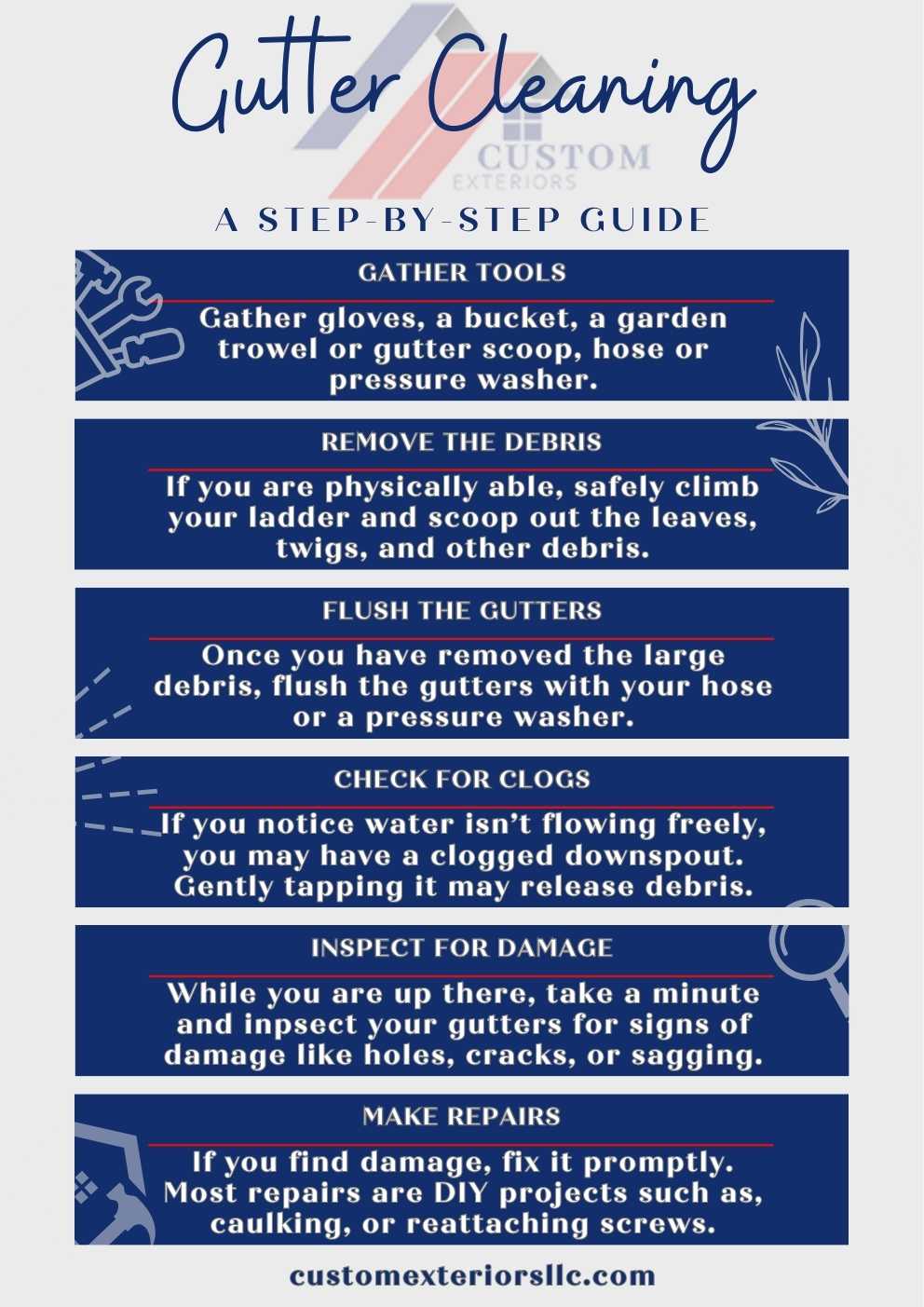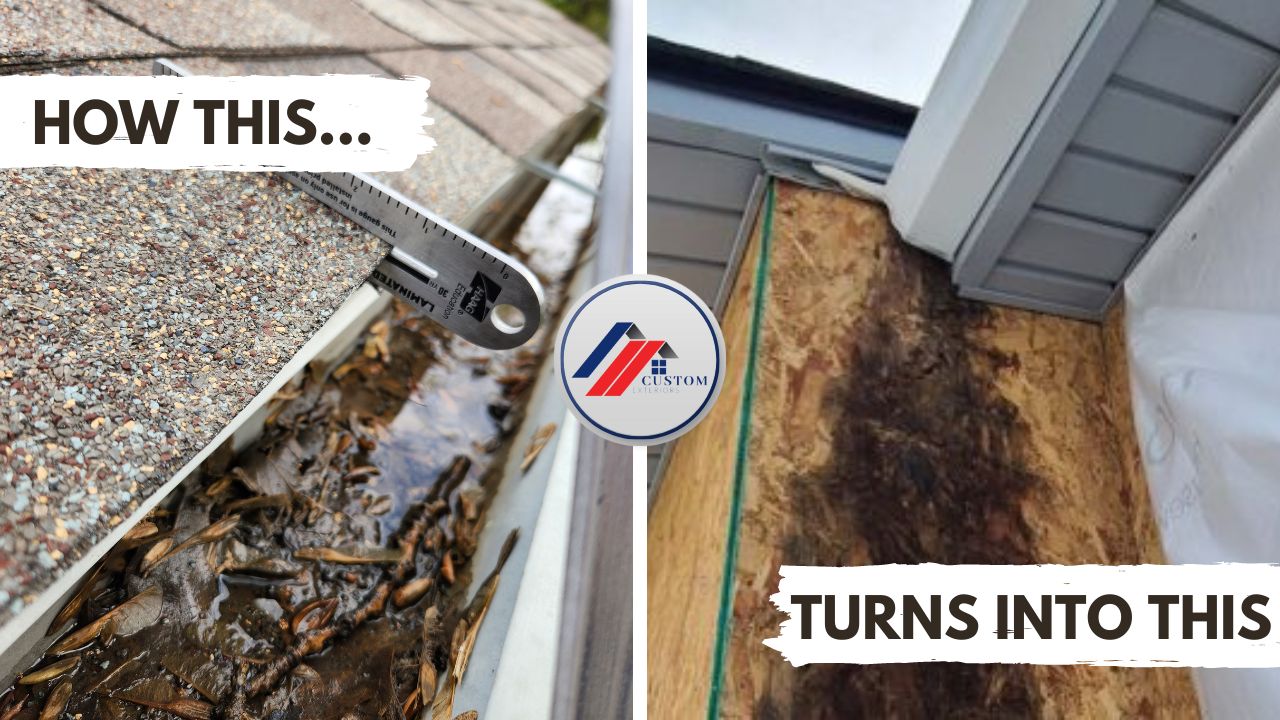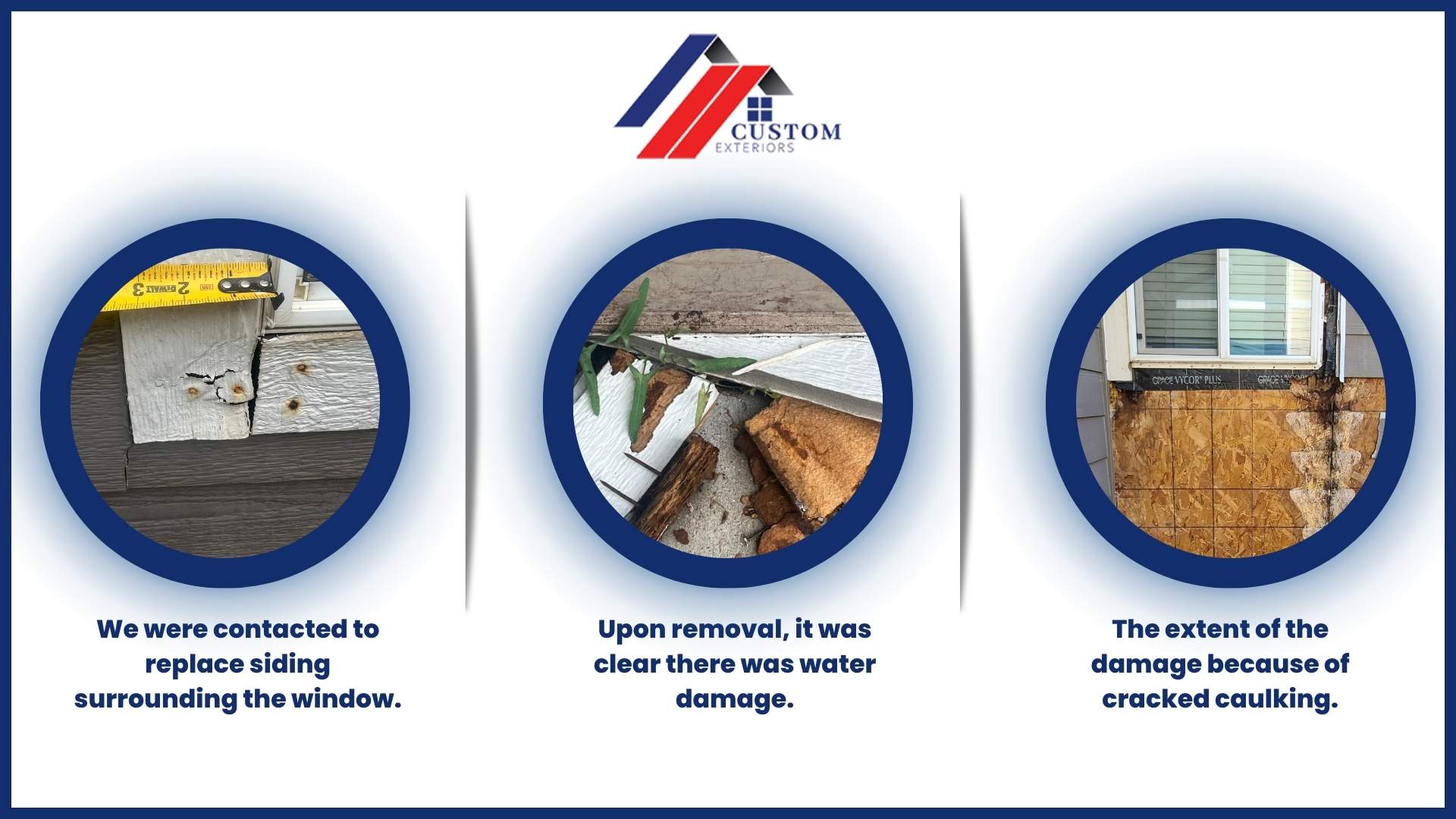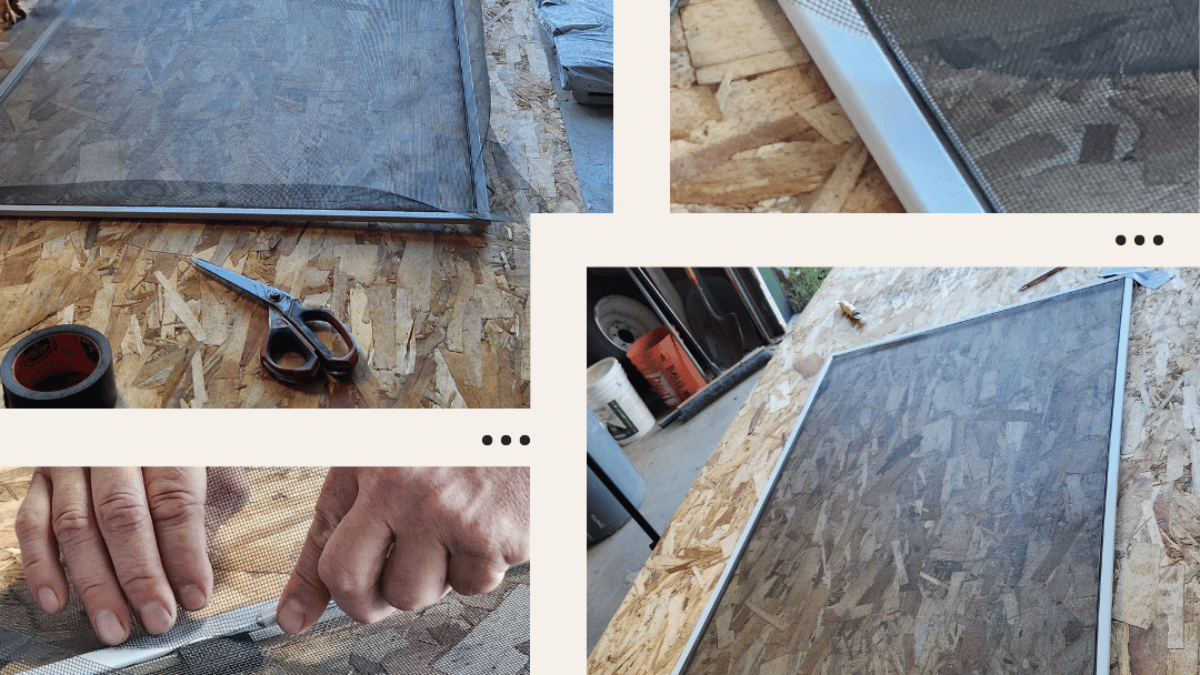The essential guide to gutter cleaning:
Protecting your home every season
The pictures above were both taken by our inspectors on Northern Colorado homes. If that doesn’t highlight the importance of proper gutter maintenance, I don’t know what does. From our experience as exterior contractors and homeowners, we’ve seen that poorly maintained gutters can cause significant and costly damage to your home. It’s easy to overlook gutters; they are designed to blend in! But they protect your home by directing water away from the foundation and walls. Neglecting gutter cleaning can lead to water damage, mold, and even structural issues.
In Northern Colorado, gutters need the most attention during spring and fall. In spring, heavy rains can overwhelm clogged gutters, causing water to seep into your home. In fall, leaves and debris can block gutters, leading to ice dams and water damage when winter arrives. Keeping your gutters clean and properly maintained is essential for safeguarding your home.
Why Gutter Maintenance Is Important
Through our years of service, we’ve seen the costly and often preventable damage that comes from neglected gutter maintenance. From mold taking hold in the damp recesses of a home to water undermining the foundation of the property, the consequences are real and can be severe. That’s why we stress the importance of regular gutter cleaning not as just a recommendation but as an important part of your home maintenance routines. In this guide we will cover:
- Understanding how gutters work and their importance
- The consequences of neglecting gutter cleaning
- Why clean gutters in the spring and fall?
- A step-by-step guide to gutter cleaning
- Pro tips to simplify gutter cleaning
- The Long-Term benefits of gutter cleaning and exterior maintenance
Custom Exteriors aims to provide you with the knowledge and skill to keep your home looking beautiful while protecting it. So, grab your ladder (metaphorically speaking), and let’s talk about your gutters, leaves, and debris and the simple measures that can save you a world of hassle and expense.
Why gutters matter

Imagine your home during a heavy rainstorm. Where does all that water go? On to the largest exterior surface of your home, your roof. Your gutters are the primary path to take all the rainwater gathered across your roof and safely guide it away from your home. But you’re not alone if you aren’t sure what gutters do or why they’re so important.
Gutters, those long channels that run along some edges of your roof, play a crucial role in protecting your home. Their job is simple but incredibly important: they catch rainwater as it runs off your roof and direct it away from your home. This might not sound like a big deal at first, but without gutters, your home is at real risk for water damage.
Here’s why gutters are important:
1. Protection from water damage:
Gutters are an important part of your home’s defense against water damage. Possibly the most important part. They work by channeling rainwater away from your roof, walls, and foundation, preventing it from seeping into areas where it can cause serious issues. Without properly functioning gutters, water can pool around your foundation, leading to cracks, leaks, and structural problems. Water that isn’t properly directed away can also damage your roof and siding, leading to costly repairs. Maintaining your gutters ensures they effectively protect your home from these risks, keeping your property safe and secure.
2. Preventing mold and mildew:
Gutters are essential in preventing mold and mildew from forming on your siding and other surfaces. By efficiently directing rainwater away from your home, gutters stop water from lingering on your exterior walls. When water is allowed to sit, it creates the perfect environment for mold and mildew to grow, which can not only damage your siding but also lead to health concerns. Keeping your gutters clean and functional ensures that water flows away from your home, protecting your siding and surfaces from the harmful effects of mold and mildew.
3. Saving your landscaping:
Gutters also play an important role in preserving your landscaping. When gutters are working properly, they direct rainwater away from your home and prevent it from overflowing onto your flower beds, shrubs, and other landscaping features. Without gutters, heavy rain can cause soil erosion, wash away plants, and even create puddles (or mosquito breeding grounds) in your yard. By keeping your gutters clean and well-maintained, you help protect your landscaping from water damage, ensuring it stays beautiful and intact.
4. Avoiding pest problems:
Maintaining your gutters is key to avoiding pests around your home. When gutters are clogged with leaves and debris, they create a perfect breeding ground for insects like mosquitoes and can attract rodents and other pests looking for shelter. Standing water in clogged gutters can also draw in pests that thrive in damp environments. By keeping your gutters clean and free-flowing, you eliminate these potential nesting sites, reducing the risk of pest infestations and keeping your home’s exterior safer and more comfortable. By keeping your gutters clean, you’re not giving mosquitoes a perfect place to breed right outside your front door!
Your gutters might not get all the attention that other parts of your house do, but they’re working hard behind the scenes to prevent potential problems. However, they need care to function correctly, so cleaning them out regularly is so important. Stick with us, and we’ll show you how to take care of your gutters, ensuring they continue to protect your home season after season.
According to Angi, the average cost to have your gutters cleaned is $207. The average cost for mold mitigation is $2230. Exterior maintenance is an investment in both your home and your peace of mind.
The consequences of ignoring gutter maintenance
Neglecting gutter cleaning can create issues that may not be noticeable until they are serious and expensive. Examples of damage we have encountered due to lack of routine maintenance includes:
- Foundation problems
- Water damage to the roof decking
- Mold growth inside and outside the home
- Ice dams
- Basement flooding
- Damage to the gutter itself due to excessive weight
- Lanscape erosion
- Mosquito infestations
We have seen firsthand roof decks, siding, and drywall damage due to the lack of gutter maintenance. Because of this, ignoring gutter cleaning is not a risk we are willing to take. Inadequate gutter maintenance can result in the hassle of scheduling repairs and facing unexpected, significant costs. By regularly maintaining your gutters, you can easily avoid these problems and protect your home from potential damage. This simple, proactive step ensures your home stays safe and secure, giving you the peace of mind that comes with knowing you’ve done everything you can to protect your investment.
The importance of gutter cleaning in the fall and spring
Unfortunately, cleaning your gutters isn’t just a once-a-year job. Like other exterior components like your roof and siding, you need to perform regular maintenance. To really protect your home, it’s crucial to focus on gutter maintenance, especially in two key seasons: fall and spring. Let’s find out why these particular times are so important.

Spring Cleaning:
Rainy season Prep:
We’ve all heard the term “spring showers,” and those showers need somewhere to go. In certain parts of the country, these spring showers regularly turn into spring downpours. After winter, your gutters might be filled with leftover leaves, debris from ice and storms, or even nests that animals make during the colder months. If your gutters are clogged with debris, all that rainwater has nowhere to go except back into your home. Cleaning out your gutters ensures spring rains have a clear path away from your home, keeping your basement dry and your foundation safe.
Damage inspection:
Spring is also a great time to check for any damage that winter might have caused to your gutters. Freezing and thawing, heavy snow, and ice can all lead to cracks in your gutter system. We have also seen gutter systems collapse or pull away from the house under the sheer weight of the ice built up in them over the winter. So, catching and fixing these issues before your first torrential downpour can save you a lot of trouble and money down the road. It’s also a great time to check over your roof and do a brief roof inspection for any signs your roof might need maintenance before the rain starts falling.
Fall Cleaning:
Leaves and Debris:
In Colorado, in the fall, trees shed their leaves like crazy. Our yards are shades of orange and brown, and everyone in the neighborhood dedicates a few days each fall to cleaning up their yards from the mess made by shedding trees. But guess where else those leaves landed? In your gutters! These falling leaves, twigs, and other debris can quickly fill up your gutters, blocking water from flowing through. If water can’t flow, it can cause all the problems we’ve discussed, like leaks and foundation damage.
Preparing for winter:
By cleaning your gutters in the fall, you’re preparing your home to face the winter storms and snow we see in the winter in Colorado. Clogged gutters can lead to ice dams which cause water to back up and damage your roof, ceilings, and walls. Clear gutters mean a smoother path for snow and ice to melt and drain away, preventing this damage.
Based on our team’s experience, regular gutter maintenance in these two seasons can significantly reduce the risk of water damage and expensive repairs. So, grab that ladder and those gloves. If your physical limitations prevent safe ladder use, call in the professionals and give your home the care it deserves.
Your step-by-step guide to gutter cleaning
Cleaning your gutters might seem like a big task, but it’s actually something most homeowners can do on their own with a little bit of guidance. Before anything else, safety is key. Consider your physical limitations before beginning. If, for any reason, you can not safely climb a ladder or have questions about your ability to do so with a bucket full of tools, call in a professional. Your safety should be your first concern; gutter cleaning is a reasonably affordable service.
If you are comfortable with heights and safe ladder use, ensure you have a sturdy ladder that can reach your gutters comfortably. Always place it on solid, level ground. Having someone with you to hold the ladder steady while you work is a good idea. Never lean over the ladder’s sides, and don’t forget to wear gloves to protect your hands from sharp objects and a pair of goggles to keep your eyes safe.

Step 1: Gather your tools
You’ll need a few basic tools before you start that will make the job smoother and quicker:
- A garden trowel or a gutter scoope
- A good pair of gloves
- A hose with a spray nozzle or pressure washer
- A bucket or tarp for debris
Step 2: Remove Debris
Following appropriate safety guidelines, climb up your ladder and start scooping out the leaves, twigs, and any other debris you find in your gutters. You can use your gloved hands, a garden trowel, or a gutter scoop to do this. Gutter scoops are a tool made to fit in and clear your gutters perfectly. They are available online and at your local home improvement store for under ten dollars. Put your debris in your bucket or the tarp you have laid below your work area. This is a messy job, so be prepared to get dirty. If the leaves are dry and loose and you are comfortable getting onto your roof, a leaf blower is a quick and effective method to clear the leaves.
Step 3: Flush the gutters
Once you have cleared your gutters of all the visible pieces of debris, it’s time to flush out the gutters with your hose or pressure washer. If you use a pressure washer, start with low pressure and gradually increase your pressure to the lowest setting required to verify the water drains properly and flows freely. High-pressure water can cause extreme damage to your home. Flushing your gutters will help clear out any smaller bits and check that water can flow freely through your gutters and downspouts. If water backs up, there might be a clog in the downspout that you need to clear.
Step 4: Check for Clogs in Downspouts
If you notice that water isn’t flowing freely, you may have a clog in one of your downspouts. Sometimes, tapping gently on the side of the downspout can loosen the debris. In tougher cases, you might need to use a plumber’s snake or high-pressure water to clear the blockage.
Step 5: Inspect for Damage
If you are already on your roof, it’s a great time to take a moment to look over your gutters and downspouts for any signs of damage, like holes, cracks, or sections that are pulling away from the house. These issues can lead to bigger problems if they’re not fixed. It’s also a good time to do a brief roof inspection while you have a closer look at the components.
Step 6: Make repairs as needed:
If you find any damage, it’s important to fix it as soon as possible. Some repairs might be simple enough to do yourself, like sealing small holes or reattaching parts of the gutter that have come loose. For bigger repairs, you might need to call in a professional.
Pro Tips for easier and safer Gutter cleaning
Tip 1: Use the Right Ladder: Invest in a sturdy, extendable ladder that reaches safely beyond the edge of your gutters. Another wise addition is a standoff stabilizer (also known as a ladder “horn” or “arm”). This keeps the ladder from resting directly on the gutters, which can cause damage such as denting or scratching.
Tip 2: Wear Protective Gear: Always wear gloves to protect your hands from sharp debris and edges inside the gutter. Safety glasses or goggles are also a must to protect your eyes from any flying debris. Also, depending on your level of comfort with heights, a harness can guard against injuries from falling.
Tip 3: Use a Gutter Scoop: A plastic gutter scoop is the best tool for removing gunky debris. It is designed to fit perfectly inside most gutter systems and is nearly a foot long, making short work of clearing gutters. It’s also tough enough to scrape out compacted material but soft enough not to damage the gutter.
Tip 4: Get a Garden Hose With a Spray Nozzle: After scooping out the debris, use a garden hose with a spray nozzle to flush the gutters. This helps you make sure water is flowing freely and draining away from your home properly. It also presents the opportunity to find any leaks that may need to be fixed before the rain/snow seasons.
Tip 5: Clean from the Ground When Possible: Consider using gutter cleaning tools that can be operated from the ground, such as gutter cleaning wands or a shop vac with gutter attachments. This reduces the risk of falls.
Tip 6: Secure Your Debris Bucket: Attach a bucket with a handle to your ladder with a lanyard or a hook for an easy way to keep debris close without having to go up and down the ladder too many times. You can also lay tarps under your work area instead of using a bucket and gather all debris at once.
Tip 7: Check the Weather: Plan your gutter cleaning on a day when the weather has been dry for a few days. Wet and soggy debris is heavier and messier to deal with.
Tip 8: Work Safely and Methodically: Move the ladder frequently rather than overreaching. Overreaching can destabilize your ladder and lead to falls. Take your time and work in sections to stay safe.
Tip 9: Inspect and Repair as You Go: Keep an eye out for any signs of damage or wear, such as cracks, holes, or rust. Small issues can often be repaired on the spot with gutter sealant or patches.
Protecting your home with gutter cleaning
Regular gutter maintenance, along with routine exterior maintenance, offers long-term benefits that go far beyond curb appeal. Some of the immediate benefits of maintaining your home are:
- Preventing expensive repairs
- Saving money
- Boosting property values
- Creating a healthier living environment
Lastly, keeping up with gutter and exterior maintenance gives you peace of mind. Knowing that you’ve taken proactive steps to protect your home means one less thing to worry about. You can rest easy during heavy rains and storms, confident that your home is well-prepared to handle whatever the weather throws its way.
Just remember, the effort you put into maintaining your home’s gutters and exteriors pays off in the long run. Not only does it save you money by preventing costly damage, but it also maintains, and potentially increases, your home’s value, contributes to a healthier living environment, and provides peace of mind. So, take the time to schedule regular maintenance checks – its and investment in your home’s future and your own well-being.




























